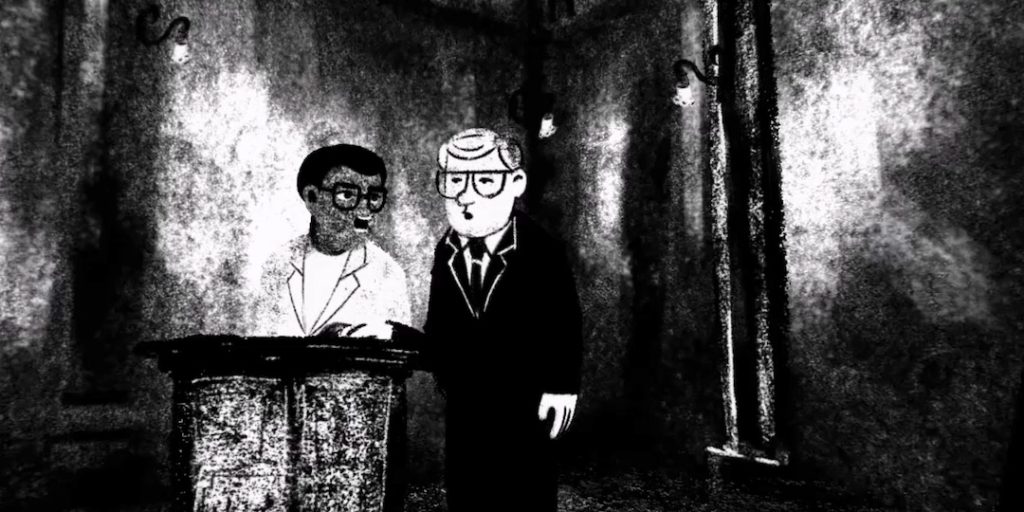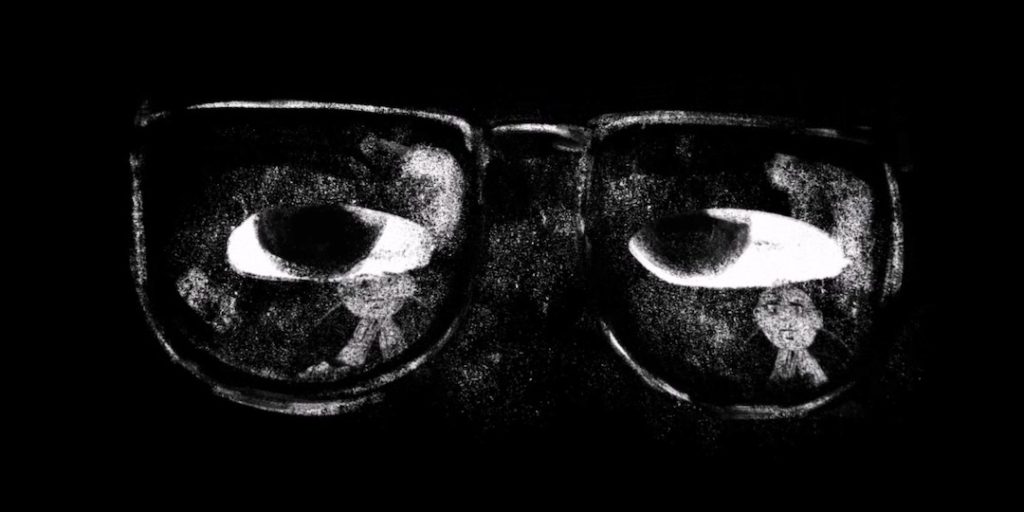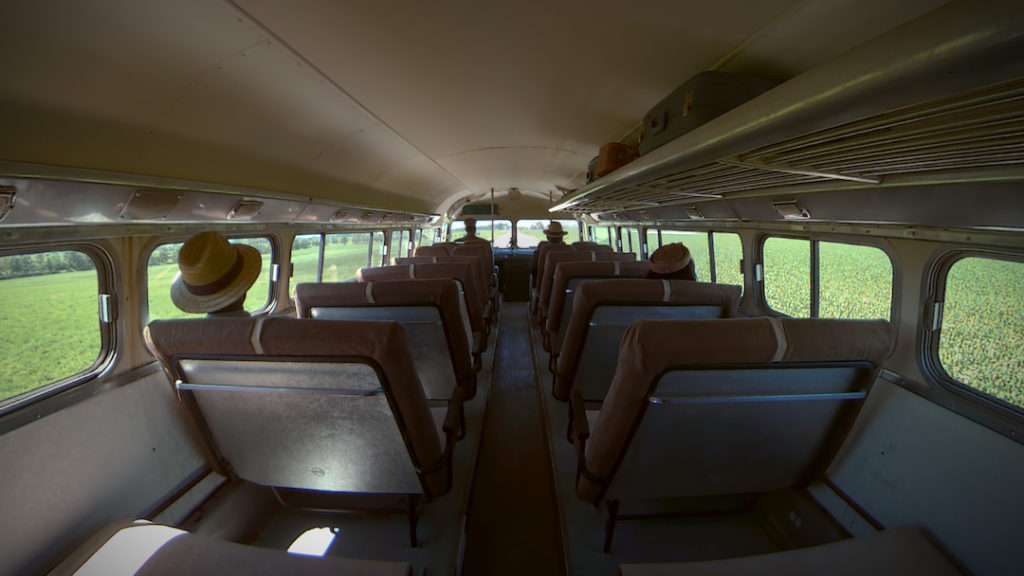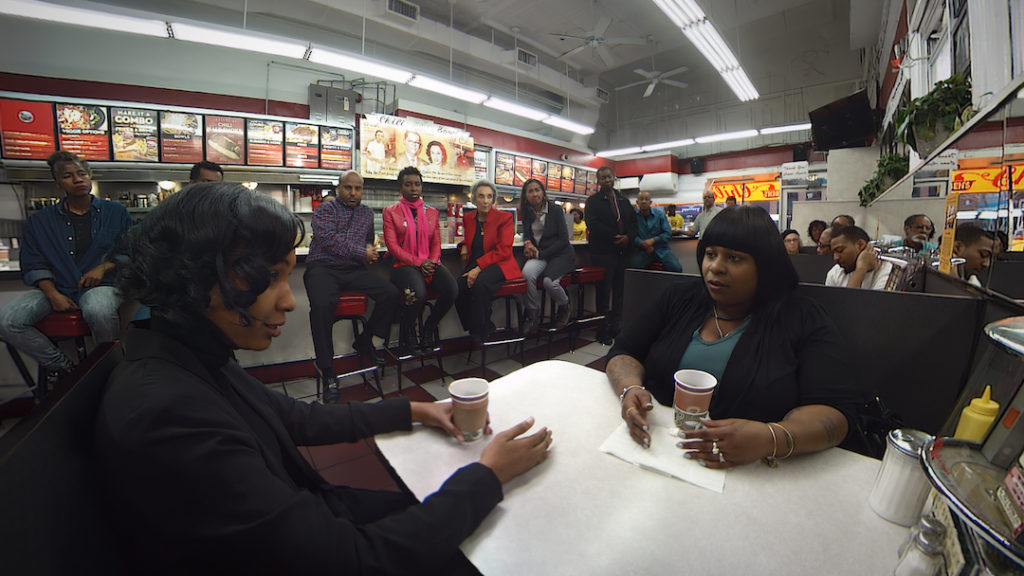This week’s contributing author, Laura Gomez, is a fourth-year undergraduate student at Northeastern University, pursuing a BS in Architecture. Her interests lie in examining social dynamics and effects in the design field at large.
VoCA is pleased to present this blog post in conjunction with Associate Professor of Contemporary Art History, Gloria Sutton’s Spring 2019 Honors seminar, The Art of Visual Intelligence at Northeastern University. This interdisciplinary course combines the powers of observation (formal description, visual data) with techniques of interpretation to sharpen perceptual awareness allowing students to develop compelling analysis of visual phenomena.
Embracing new technologies in contemporary art making and exhibitions is allowing for a new level of engagement with the public. Virtual Reality (VR) has the power to change how contemporary art is created and lived, and with each new technology that is welcomed into the art field, the possibilities expand even further. It is exciting to think about the prospect of the field as it continually adapts; the way in which we think about art could be constantly challenged and developed, bringing about new artwork and expressions that could only be hypothesized before. Although Virtual Reality is not new, the way in which it can create a bond between the artwork and the audience can be revolutionary. Through a focused multi-sensory experience, Virtual Reality allows the audience to submerge themselves in the work, and simultaneously allows the artist to expand the ways in which they are able to express their concepts and interact with their audience, especially as it relates to prevalent social issues.
The VR Cinema installation at The Phi Centre in Montreal, Canada is embracing this connection between technology and contemporary art. The VR Cinema was inaugurated last year, and through two installations with varying films created for virtual reality, they have opened up the gallery to appreciate art and innovation. In March 2019, it exhibited two films centered around Black History Month, that addressed different social issues through art and documentary film.
In Accused no. 2: Walter Sisulu, a fourteen-minute film by Nicolas Champeaux and Gilles Porte, the audio from ANC court hearings is paired with black and white illustrations, setting the viewer in the courtroom and in various scenes being described by Sisulu. Using virtual reality as a platform allows the film to fully transport the audience to the spaces being described, blocking off distractions and compelling the viewer to look around the environment and explore the scenes. From the beginning set-up of the courtroom, you are transported to a multitude of settings throughout the hearing, the visuals detailing the stories told by Walter Sisulu. One of the first scenes takes you to the inside of a coal mine. The drawing of Sisulu being questioned in the courtroom transforms to that of a miner inside a cave. As clanking sounds fill the headsets, you look around and find yourself inside the same cave. The background has changed from gray and white to a stark black, the figures now drawn in bright white in place of the black strokes previously shown. Below are small carts on tracks, and a never-ending spiral of men pounding on the rock surface. You hear the tracks, the mining, and you hear Walter Sisulu’s testimony. This part of the short film begins to explain to the viewer the setup of the rest of the piece: although the audio takes place inside an unidentifiable courtroom, the speaker’s testimony is clearly illustrated and lived by you as the viewer.

This immediate, immersive experience of the testimony makes the story more poignant and urgent. The recording tapes are not simply a noise emanating from a faceless mouth as you stare at a blank museum wall. Instead, you get to meet the man behind the voice, you get to hear the situations he details in his testimony, you are able to witness the inequalities that he professes. The simple and somewhat rough style of the illustration gives a softer edge to the incredibly serious audio, without minimizing its impact and importance. At the end of Accused no. 2: Walter Sisulu, as the screen went pitch black and sound ceased to come from the headset, I felt an urgent need for more information on the trial. This piece found a nuanced and personal way to highlight a revolutionary moment in history, in a way that was not overwhelming but rather inspiring.

The second film, Traveling While Black, by Roger Ross Williams, is shot in a documentary style with real people and journalists, and is based mostly in Ben’s Chili Bowl, a restaurant famous for its hospitality to African Americans prior to and during the Civil Rights movement. The film also cuts to footage of various historical and recent stories about navigating spaces as an African American. The scenes place the viewer in the same spaces and situations as the people being interviewed and as such, create a more life-like interaction between the art (film) and you as an audience. Despite the more life-like style of this piece, you are still able to look around and interact with the film, without interrupting the concept or intent of the artwork.

One of the most striking moments of the film is the interview of Samaria Rice, the mother of Tamir Rice, a young teenager who passed at the hands of police brutality in 2014. Samaria’s interview puts a lot of the historical points talked about in the film into a present-day context. Being able to connect the headlines that I read back to the face of a grieving mother exemplified the essence of this film: navigating spaces as a person of color in America has not been, and still isn’t, safe. The film continues with you sitting as the third maybe fourth person in a booth as victims, leaders, and survivors are interviewed and tell their truth. Following the piece by Samaria Rice, the film felt less like a history lesson and more like a glimpse into a struggle that I had heard of but had no experience of. As a light Latinx, a lot of these issues do not pertain to me, but the film educated me further on the social experiences of my peers, family, and the larger population of people of color in America. Having this film showcased through Virtual Reality allowed for no distractions, and made sure the viewer stayed through the whole piece, even when the topics covered were uncomfortable to confront.

Virtual Reality was used in this installation of the VR Cinema as a way fully integrate the viewer with important messages that were hard to ignore or undermine, highlighting struggles and victories of a group that is often underrepresented, and allowing a personal glimpse into stories we often hear but seldom listen to.
All Images courtesy of the Phi Centre, Montreal, Canada.
